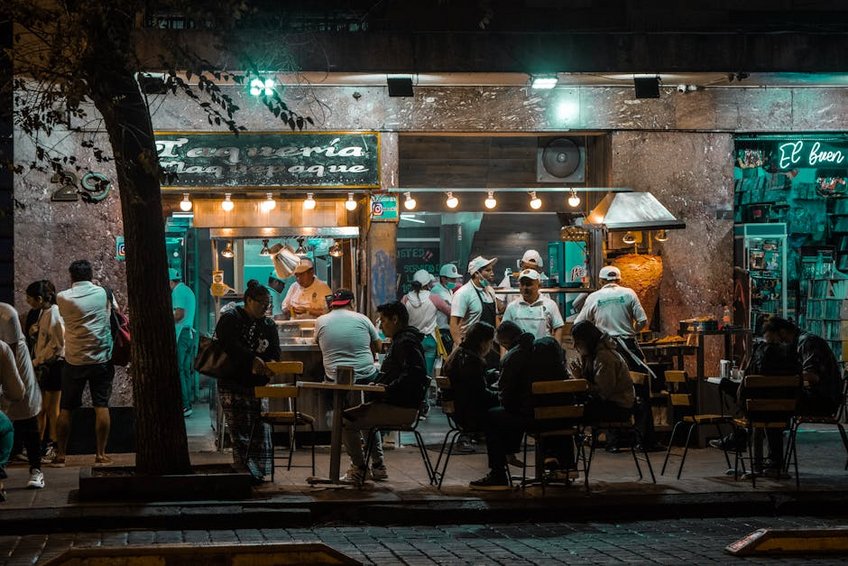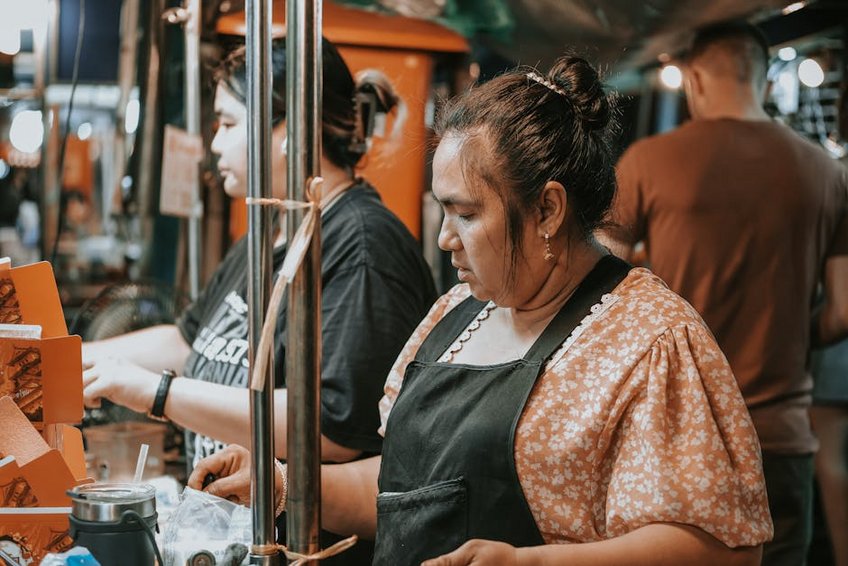Street Food: From Bangkok to Mexico City – A Culinary Journey
Exploring street food from Bangkok to Mexico City represents one of the most exciting culinary adventures any food lover can experience. These two destinations, separated by thousands of miles yet connected by their vibrant street food cultures, offer completely different but equally compelling gastronomic journeys. Bangkok’s chaotic markets filled with sizzling woks and aromatic spices contrast beautifully with Mexico City’s colorful stands offering complex moles and fresh tacos. This street food exploration will take you through bustling Asian night markets to lively Mexican plazas, introducing you to flavors that have been perfected over generations. Whether you’re drawn to the fiery heat of Thai chilies or the complex richness of Mexican sauces, this guide will help you navigate both culinary landscapes like a seasoned traveler. Prepare your taste buds for an unforgettable adventure through two of the world’s greatest street food destinations.
Street Food Essential Information – What Every Traveler Should Know
Understanding the fundamentals of street food culture in both Bangkok and Mexico City will significantly enhance your culinary experience. These are not just places to grab a quick bite—they represent centuries of culinary tradition, family recipes, and local eating habits. In Bangkok, street food operates on a different rhythm than in Mexico City, with vendors often specializing in just one or two dishes they’ve perfected over decades. Mexico City’s street food scene incorporates more complex preparation methods, with many dishes requiring hours of cooking time. Both cities share a common thread: food is meant to be enjoyed fresh, often prepared right before your eyes, and consumed standing up or at simple plastic tables. The social aspect of street food in both cultures cannot be overstated—it’s where communities gather, stories are shared, and culinary traditions are preserved.
Bangkok Street Food Culture – What You Need to Understand
- Vendors typically operate from early morning until late night, with different specialties available at different times of day
- Cash is king—very few street food vendors accept credit cards, so always carry Thai Baht (though USD prices are referenced for travelers)
- Eating etiquette involves using spoon and fork (not chopsticks) for most dishes, with the spoon being the primary eating utensil
- Street food prices range from $1-3 USD per dish, making it incredibly affordable for international visitors
- Budget traveler: $10-15 USD daily allows for 3-4 street food meals plus drinks
- Mid-range experience: $20-30 USD daily includes food tours, cooking classes, and premium dishes
- Luxury street food journey: $50+ USD daily covers private guides, transportation between markets, and exclusive food experiences
- Tourism Authority of Thailand Official Site
- Mexico Tourism Board Official Site
- CDC Travel Health Information
Mexico City Street Food Traditions – Key Cultural Aspects
Mexico City’s street food culture operates with its own unique rhythm and rules. Unlike Bangkok’s more centralized markets, you’ll find food stands throughout the city’s neighborhoods, each with their own specialties. The concept of “antojitos” (little cravings) is central to understanding Mexican street food—these are small dishes meant to satisfy specific cravings throughout the day. From morning tamale stands to late-night taco vendors, the street food scene changes dramatically based on the time of day. Most vendors accept Mexican pesos only, though some in tourist areas might accept USD at less favorable exchange rates. Prices typically range from $2-5 USD per dish, with tacos often being the most affordable option.

Street Food Planning Your Trip – Timing and Budget Considerations
Planning your street food adventure requires understanding seasonal variations, budget considerations, and practical preparation. The best time to visit Bangkok for street food is during the cool season from November to February, when temperatures are more comfortable for exploring outdoor markets. Mexico City’s high altitude makes its climate relatively pleasant year-round, though the rainy season (June-September) can affect outdoor eating experiences. Budgeting for a street food journey is surprisingly affordable—you can easily enjoy multiple meals for under $15 USD per day in both cities. However, it’s wise to allocate extra funds for food tours or cooking classes to deepen your understanding of these culinary traditions. Preparation should include researching basic food safety practices, learning key phrases in Thai and Spanish, and understanding how to identify busy stalls (usually an indicator of freshness and quality).
Best Time to Visit for Street Food Experiences
Timing your visit correctly can dramatically improve your street food experience in both destinations. Bangkok’s street food scene thrives year-round, but the November to February cool season offers the most comfortable weather for market exploration. During these months, temperatures range from 70-85°F (21-29°C), making it pleasant to wander between food stalls. Mexico City’s dry season from November to April provides ideal conditions for street food hunting, with minimal rainfall and comfortable temperatures around 65-75°F (18-24°C). Both cities celebrate numerous food festivals throughout the year—Bangkok’s Vegetarian Festival in October and Mexico City’s Day of the Dead celebrations in November offer unique culinary experiences. Avoid visiting during extreme weather periods: Bangkok’s hottest months (March-May) can be uncomfortable for outdoor eating, while Mexico City’s rainy season might limit street food availability.
Budget Planning for Street Food Adventures
Essential Preparation Checklist for Street Food Travel
Proper preparation ensures you can fully enjoy street food experiences without concerns about food safety or cultural missteps. First, consult your doctor about recommended vaccinations and consider bringing probiotics to help your digestive system adjust to new cuisines. Pack hand sanitizer and wet wipes—while many vendors provide napkins, having your own cleaning supplies is practical. Learn basic phrases in the local languages: “Aroy mak” (very delicious) in Thai and “Qué rico” (how delicious) in Spanish will delight vendors. Research food safety signs: look for busy stalls with high turnover, observe how vendors handle money versus food, and notice if they cook items to order. Finally, bring comfortable walking shoes—the best street food discoveries often come from exploring neighborhoods on foot.
Street Food Top Attractions and Activities – Must-Try Experiences
The street food scenes in Bangkok and Mexico City offer countless attractions and activities beyond simply eating. In Bangkok, the experience begins with navigating the labyrinthine alleys of Chinatown’s Yaowarat Road, where seafood restaurants spill onto the streets and the air fills with the scent of garlic and chili. Don’t miss the floating markets like Amphawa, where vendors sell boat-to-boat, offering a unique perspective on Thai street food culture. Mexico City’s street food attractions include the legendary mercado de San Juan, where exotic ingredients meet traditional recipes, and the weekend tianguis (open-air markets) in neighborhoods like Coyoacán. Both cities offer excellent food tours that provide context, translation, and access to hidden gems you might miss on your own. Consider taking cooking classes in both destinations to bring these culinary traditions home with you.
Must-See Street Food Highlights in Both Cities
Certain street food experiences define these culinary destinations and should not be missed. In Bangkok, start with pad thai from Thip Samai, arguably the city’s most famous pad thai vendor operating since 1966. Visit Jay Fai’s street food stall, awarded a Michelin star for her incredible crab omelets and drunken noodles. Experience the vibrant Chatuchak Weekend Market, where food stalls offer everything from grilled seafood to exotic fruits. In Mexico City, the must-try list begins with tacos al pastor from El Huequito, where vertical spits of marinated pork create a spectacle as much as a meal. Seek out the quesadilla stands in Mercado de la Merced, where blue corn tortillas are filled with incredible ingredients. Don’t miss the churrería El Moro, serving hot churros and chocolate since 1935, representing Mexico City’s sweet street food traditions.
Hidden Gems and Local Favorites Off the Beaten Path
Beyond the famous spots, both cities hide incredible street food experiences known mainly to locals. In Bangkok, venture to the Wang Lang Market near Siriraj Hospital, where medical students and staff flock to incredible noodle soup vendors and dessert stalls. The Soi 38 night market, though smaller than others, offers some of Bangkok’s best kuay teow (noodle soup) and mango sticky rice. In Mexico City, explore the street food scene around Universidad Nacional Autónoma de México (UNAM), where student budgets ensure amazing food at unbelievable prices. The Tlalpan neighborhood’s market offers exceptional tlacoyos (oval-shaped masa cakes) and other antojitos rarely found in tourist areas. These local favorites often provide more authentic experiences and opportunities to interact with residents who genuinely appreciate their neighborhood vendors.
Street Food Practical Travel Information – Navigation and Accommodation
Navigating street food scenes requires understanding transportation, accommodation options, and daily logistics. Both Bangkok and Mexico City have extensive public transportation systems that make reaching food destinations straightforward. In Bangkok, the BTS Skytrain and MRT subway provide efficient access to major street food areas, while taxis and tuk-tuks work for shorter distances. Mexico City’s Metro system is incredibly affordable and reaches most neighborhoods with notable street food scenes. When choosing accommodation, consider staying in areas known for their food culture—Bangkok’s Sukhumvit or Old City neighborhoods, or Mexico City’s Roma, Condesa, or Centro Histórico districts. This positioning allows for early morning and late-night food adventures without long commutes. Always carry small denominations of local currency, as street food vendors rarely make change for large bills.
| Transportation Category | Options and Features | Price Range (USD) |
|---|---|---|
| Bangkok Public Transit | BTS Skytrain, MRT subway, buses, river boats | $0.50-2 per ride |
| Mexico City Metro | Extensive subway system, metrobus lines | $0.25 per ride |
| Ride-Sharing Services | Grab (Bangkok), Uber/Didi (Mexico City) | $3-10 per trip |
| Traditional Transport | Tuk-tuks (Bangkok), peseros (Mexico City minibuses) | $2-5 per ride |


